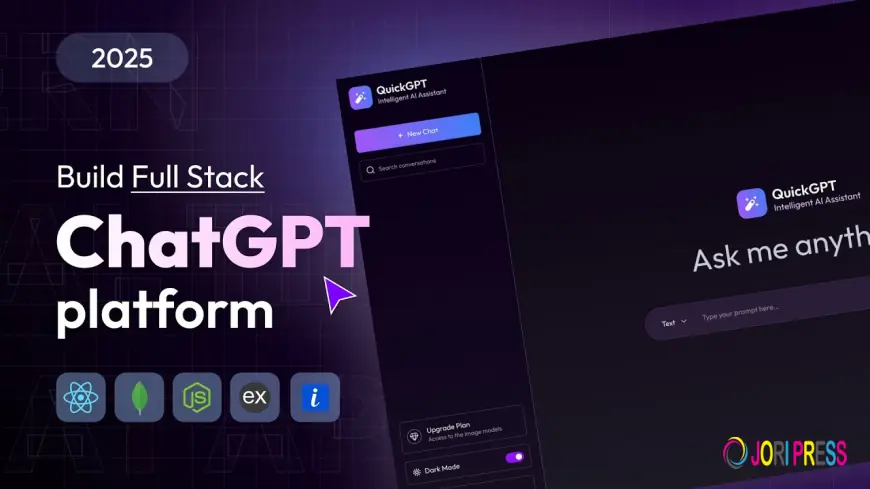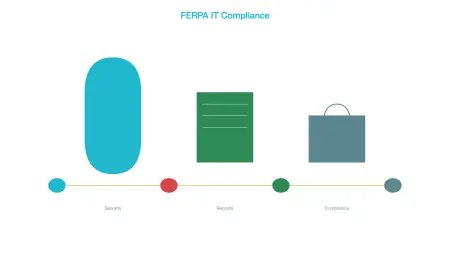Build Your Own Full Stack ChatGPT using React JS, OpenAI, ImageKit
Learn how to build a full-stack ChatGPT clone using React JS, Node.js, MongoDB, OpenAI, ImageKit, and Stripe. A step-by-step MERN stack AI project covering frontend, backend, AI integration, monetization, and deployment with real market insights.

Artificial Intelligence is no longer a futuristic concept—it’s the backbone of today’s most successful products. From chatbots to recommendation engines, AI is reshaping how users interact with technology. In 2025 alone, the AI software market is expected to reach $298 billion globally, growing at over 38% CAGR.
At the same time, MERN stack development has become one of the most in-demand skills worldwide. With MongoDB, Express, React, and Node.js, developers can build scalable, full-stack apps faster than ever. Combine that with AI APIs like OpenAI or Google Gemini, cloud storage services like ImageKit, and monetization platforms like Stripe, and you have a production-ready, revenue-driven product.
This blog will walk you through building your own ChatGPT-like full-stack project—from frontend (React) to backend (Node + MongoDB), AI integration, monetization, and deployment.
By the end, you’ll not only have a working project but also understand how these technologies come together to give you an edge in today’s job market.
The Frontend – Building the User Interface (React)
The Foundation
Every great project starts with a solid foundation.
-
Set up React: Use
create-react-appor Vite to bootstrap your React project. For enterprise-scale work, consider Next.js vs React—Next.js offers SSR and routing, while React is more flexible for SPAs. -
Organize project structure: Keep clear directories:
-
/components– UI elements -
/pages– route-based pages -
/services– API calls -
/context– global state management
-
-
Initial Pages: Build a simple
Home.jspage to serve as your entry point.
For scaling UI development, explore React JS UI Frameworks like Material-UI or TailwindCSS, which reduce development time and ensure design consistency.
Core User Interface & Navigation
Your AI app needs a smooth, intuitive, and modern UI.
-
Sidebar: Build a collapsible sidebar with navigation links (Home, Chat, Community, Credits, Login). Use
react-router-domfor routing. -
ChatBox Component:
-
Text area for user input
-
Message list with auto-scroll
-
Loader animation when waiting for AI response
-
Error handling for failed API calls
-
Many developers use React Carousel Libraries (like SwiperJS or React-Slick) for showcasing user prompts, featured chats, or tutorials inside the app.
Enhancing the User Experience
Beyond a chat interface, your app should feel like a community-driven ecosystem.
-
Loading Page: Show spinners or skeleton screens while data loads.
-
Community Page: A forum-like space where users can post interesting prompts, share outputs, or connect.
-
Credits Page: Acknowledge open-source libraries, contributors, and APIs like OpenAI and ImageKit.
-
Login Page: Implement form validation, error states, and JWT-based login.
At this stage, your frontend is fully functional and user-friendly.
The Backend & Database
Backend Setup & API Development
Your backend is the engine powering authentication, chat persistence, and payment flows.
-
Setup: Initialize a Node.js + Express server. Add middleware for JSON parsing, CORS, and Helmet for security.
-
Database: Connect MongoDB (Atlas or Local). Create schemas:
-
UserSchema(username, email, password, subscription) -
ChatSchema(userId, messages, timestamps) -
CommunitySchema(posts, comments, likes)
-
-
APIs to implement:
-
POST /auth/register -
POST /auth/login -
POST /chat/send -
GET /chat/history/:id -
POST /community/create
-
If you’re scaling backend hiring, it’s often better to Hire React Developers who are comfortable with full-stack MERN development rather than splitting frontend/back-end roles.
Powering the AI, Images & Monetization
AI & Image Generation
Here’s where the real magic happens.
-
Text Generation: Connect OpenAI (ChatGPT) or Google Gemini APIs. Handle prompts, manage streaming responses, and store chat logs in MongoDB.
-
Image Generation: Use ImageKit for storing, transforming, and delivering generated images. You can build a simple gallery for users.
This step is what makes your app stand out—users get a full conversational + visual AI experience.
Monetization with Stripe
Every serious project should have a business model.
-
Stripe Integration: Add payment checkout (client-side React + server-side Node).
-
Subscription Model: Example—
-
Free Plan: 20 AI prompts/month
-
Pro Plan: Unlimited prompts + image generation
-
-
Security: Use Stripe webhooks for payment verification and account upgrades.
Deployment & Launch
Once your app works locally, take it live.
-
Backend: Deploy with Render, Railway, or AWS.
-
Frontend: Deploy with Netlify or Vercel.
-
Domain & SSL: Buy a domain, set up SSL, and connect API endpoints.
-
Testing: Check login, payments, chat, and image flows.
Congratulations—you’ve just deployed your own AI SaaS product.
Market & Career Insights
-
Global Growth: The AI chatbot market is projected to reach $27 billion by 2030, with businesses rapidly integrating conversational AI.
-
India’s AI Market: Growing at 40% CAGR, expected to hit $8 billion by 2025.
-
MERN Developer Salaries:
-
Freshers: ₹3–6 LPA
-
Mid-level: ₹6–12 LPA
-
Senior: ₹12–20+ LPA
-
-
Demand Trend: Many companies now hire React developers with backend exposure instead of just frontend expertise, making full-stack projects like this highly valuable in portfolios.
For those evaluating technology choices, explore React for Web Development (ideal for SPAs) vs React Native (for cross-platform mobile apps). Also compare Next.js vs React to decide on SSR vs CSR projects.
Conclusion
Building a Full-Stack AI Chat Application with React, Node, MongoDB, OpenAI, ImageKit, and Stripe gives you:
-
Hands-on expertise in modern MERN development
-
Real-world skills in AI integration
-
Monetization workflows are essential for SaaS
-
A deployable, portfolio-worthy project
This project not only makes you job-ready but also positions you at the intersection of AI innovation and full-stack development, two of the fastest-growing areas in the global tech industry.
What's Your Reaction?
 Like
0
Like
0
 Dislike
0
Dislike
0
 Love
0
Love
0
 Funny
0
Funny
0
 Angry
0
Angry
0
 Sad
0
Sad
0
 Wow
0
Wow
0


















































